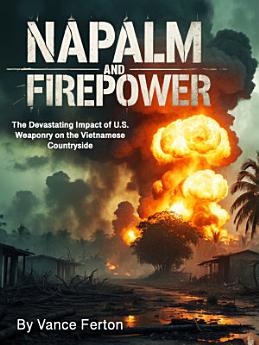Napalm and Firepower: The Devastating Impact of U.S. Weaponry on the Vietnamese Countryside
About this ebook
The chemistry of napalm's effectiveness as a weapon lay in its unique physical properties that combined the destructive power of fire with the persistence of an adhesive gel that could not be easily extinguished or removed from surfaces where it landed. The aluminum naphthenate and aluminum palmitate that gave napalm its gel-like consistency allowed the burning fuel to stick to buildings, vegetation, and human skin while also enabling it to spread into areas that conventional explosives could not reach. The addition of white phosphorus to some napalm formulations created super napalm, which could achieve even higher temperatures while also producing toxic smoke that created additional casualties among those who survived the initial fire damage.






